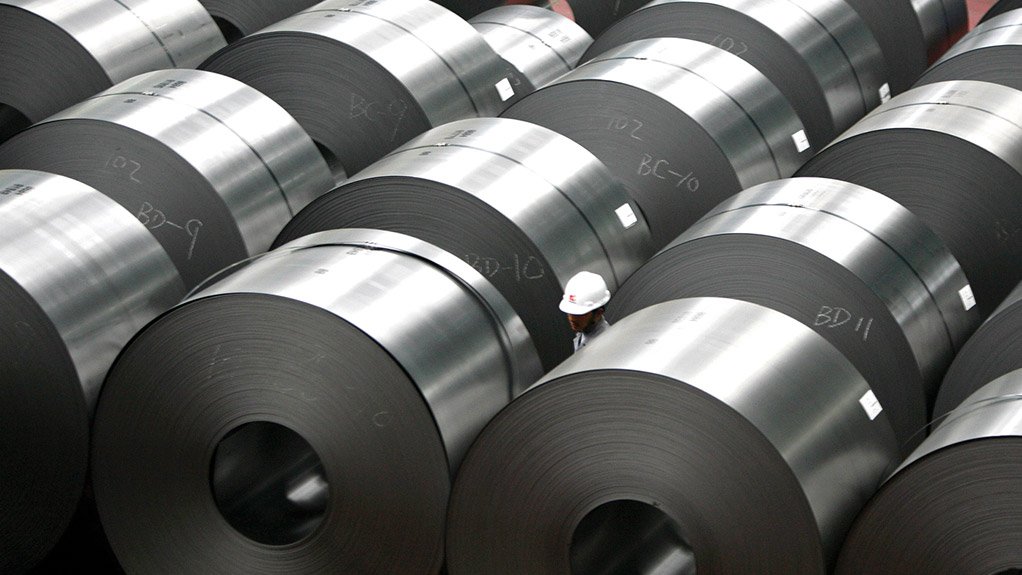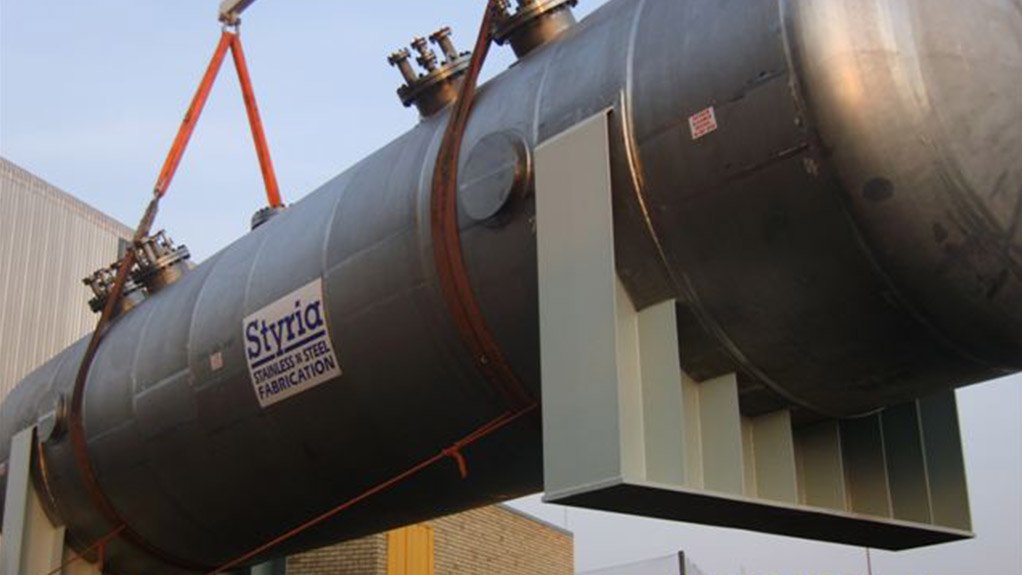Increasing enthusiasm in industry to use different stainless steel material



DUPLEX GRADE INCREASE Over the past thirteen years, the market share of duplex stainless steels worldwide has doubled
STEEL UPGRADE The addition of nitrogen during manufacture in the 1970s resulted in a greater austenitic alloying, which led to modern duplex stainless steels such as SAF 2205
There is a growing willingness from industry to accept different stainless steel materials, particularly duplex stainless steels, Southern Africa Stainless Steel Development Association Fabricator Sector chairperson Gary Crawford tells Engineering News.
He says that, for example, 2304 duplex stainless steel is now quite often specified for fabrication, noting that sole South African stainless steel manufacturer Columbus Stainless currently manufactures this grade.
Although the range of duplex grades seldom exceeds 1% of total global stainless steel use, there is a trend towards using these grades of duplexes more, Crawford says.
He refers to the International Stainless Steel Forum’s report, ‘Melt shop production by grade category – 2013,’ which was released in May 2014. The report notes that, since 2000, duplex grades have reached or exceeded 1% market share in only 2007, 2008, 2011 and 2012.
However, over the past 13 years, the market share of duplex stainless steels worldwide has doubled.
Duplex stainless steels, first manufactured in Sweden in 1930, have superior corrosion resistance, but poor weldability, as the heat-affected zones are particularly affected, Crawford points out.
However, the addition of nitrogen during manufacture in the 1970s resulted in a greater austenitic alloying, which led to modern duplex stainless steels such as SAF 2205, he says.
Duplex stainless steels offer higher strength, as they are two-phase microstructures con-sisting of ferritic and austenitic stainless steel. “Duplex at 400 MPa to 550 MPa 0.2% proof stress (PS) is . . . significantly stronger than austenitic stainless steel, at 200 MPa 0.2% PS, and ferritic stainless steels at 250 MPa 0.2% PS,” Crawford points out.
Other key features include greater corrosion resistance, particularly in terms of stress corrosion cracking and good weldability, he highlights.
Crawford further asserts that, “with ostensibly better price stability and [a] lower price”, it is on the commercial front that duplexes “should score.”
“Add to the advantage side of the equation the ‘insulation’ of duplex stainless steels from volatile nickel prices and you have a winner,” he adds.
Moreover, says Crawford, the less requested LDX 2404 duplex grade recently received a boost when it was reported that uranium mining company Swakop Uranium’s Husab uranium mine, in Namibia, had ordered about 4 000 t of LDX 2404, which will be delivered to the mine’s plants for use in tanks, pressure vessels, clarifiers and columns.
Based on its significant corrosion resistance, LDX 2404 was chosen as the construction material for the main body of tanks.
Industry Trends
Although industry is keeping abreast of the uses and benefits of the latest materials, it must also move towards increased sophistication in terms of design and manufacturing.
Crawford highlights the need for fabrica-tors to be more proactive in terms of provid-ing solutions-based approaches, rather than simply fabricating product according to construction drawings.
Further, he asserts that, in addition to the requirement of a quality management system, a fabricator must have proven welding skills (as required by the SAIW IIW ISO 3834 welding certification) and have good knowledge of pressure equipment legislation, such as SANS 347, to be competitive in industry.
Looking Forward
Crawford believes that South African fabricators should not restrict themselves to the local market and must look further afield. Although local business for South African stainless steel fabricators peaked about two years ago, there are currently fewer ongoing projects in South Africa – a contributing factor being labour unrest and the consequent strikes – which has lowered demand for stainless steel fabrication, he says.
“Nevertheless, South Africa still retains the talent, the knowledge base and the skills sets, as well as the capacity to stimulate growth and business in the stainless steel industry,” Crawford concludes.
Article Enquiry
Email Article
Save Article
Feedback
To advertise email advertising@creamermedia.co.za or click here
Comments
Press Office
Announcements
What's On
Subscribe to improve your user experience...
Option 1 (equivalent of R125 a month):
Receive a weekly copy of Creamer Media's Engineering News & Mining Weekly magazine
(print copy for those in South Africa and e-magazine for those outside of South Africa)
Receive daily email newsletters
Access to full search results
Access archive of magazine back copies
Access to Projects in Progress
Access to ONE Research Report of your choice in PDF format
Option 2 (equivalent of R375 a month):
All benefits from Option 1
PLUS
Access to Creamer Media's Research Channel Africa for ALL Research Reports, in PDF format, on various industrial and mining sectors
including Electricity; Water; Energy Transition; Hydrogen; Roads, Rail and Ports; Coal; Gold; Platinum; Battery Metals; etc.
Already a subscriber?
Forgotten your password?
Receive weekly copy of Creamer Media's Engineering News & Mining Weekly magazine (print copy for those in South Africa and e-magazine for those outside of South Africa)
➕
Recieve daily email newsletters
➕
Access to full search results
➕
Access archive of magazine back copies
➕
Access to Projects in Progress
➕
Access to ONE Research Report of your choice in PDF format
RESEARCH CHANNEL AFRICA
R4500 (equivalent of R375 a month)
SUBSCRIBEAll benefits from Option 1
➕
Access to Creamer Media's Research Channel Africa for ALL Research Reports on various industrial and mining sectors, in PDF format, including on:
Electricity
➕
Water
➕
Energy Transition
➕
Hydrogen
➕
Roads, Rail and Ports
➕
Coal
➕
Gold
➕
Platinum
➕
Battery Metals
➕
etc.
Receive all benefits from Option 1 or Option 2 delivered to numerous people at your company
➕
Multiple User names and Passwords for simultaneous log-ins
➕
Intranet integration access to all in your organisation


















